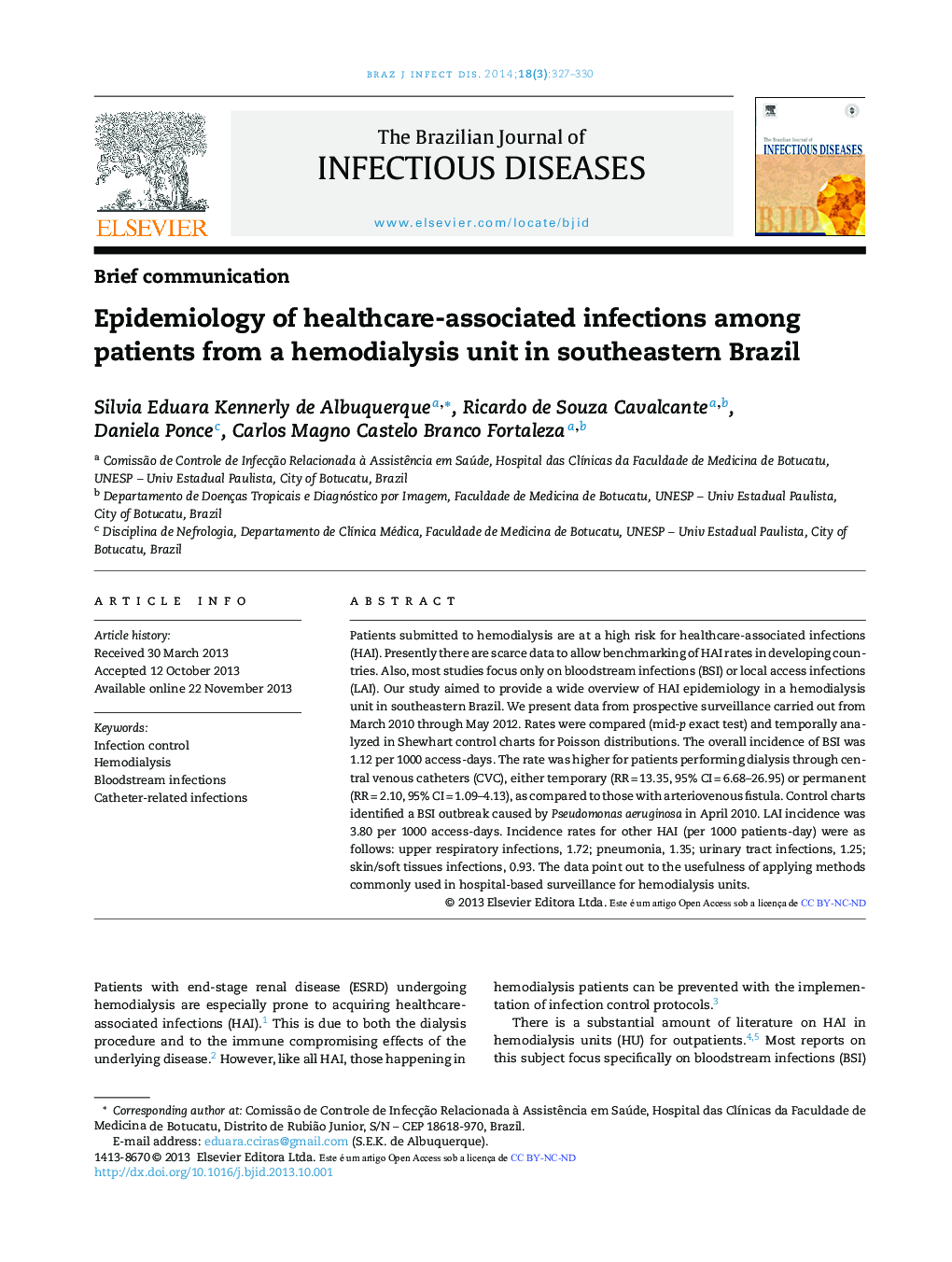| Article ID | Journal | Published Year | Pages | File Type |
|---|---|---|---|---|
| 3344132 | The Brazilian Journal of Infectious Diseases | 2014 | 4 Pages |
Patients submitted to hemodialysis are at a high risk for healthcare-associated infections (HAI). Presently there are scarce data to allow benchmarking of HAI rates in developing countries. Also, most studies focus only on bloodstream infections (BSI) or local access infections (LAI). Our study aimed to provide a wide overview of HAI epidemiology in a hemodialysis unit in southeastern Brazil. We present data from prospective surveillance carried out from March 2010 through May 2012. Rates were compared (mid-p exact test) and temporally analyzed in Shewhart control charts for Poisson distributions. The overall incidence of BSI was 1.12 per 1000 access-days. The rate was higher for patients performing dialysis through central venous catheters (CVC), either temporary (RR = 13.35, 95% CI = 6.68–26.95) or permanent (RR = 2.10, 95% CI = 1.09–4.13), as compared to those with arteriovenous fistula. Control charts identified a BSI outbreak caused by Pseudomonas aeruginosa in April 2010. LAI incidence was 3.80 per 1000 access-days. Incidence rates for other HAI (per 1000 patients-day) were as follows: upper respiratory infections, 1.72; pneumonia, 1.35; urinary tract infections, 1.25; skin/soft tissues infections, 0.93. The data point out to the usefulness of applying methods commonly used in hospital-based surveillance for hemodialysis units.
